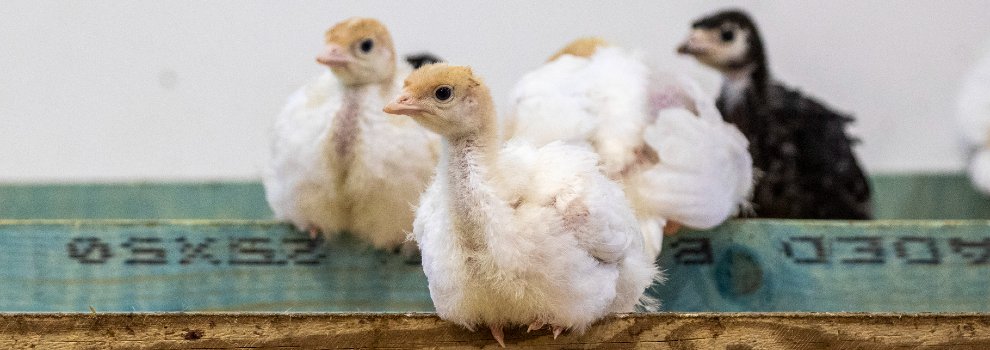- Find a Pet
- Advice and Welfare
- Ways to Give
- Get Involved
- What We Do
- Search
- My RSPCA
- Report a concern
- Sponsor
-
Colour modeVivid Calm
- Home
- Advice and welfare
- Farm animals
- Turkeys
- Farming
Farming turkeys
There are three main commercial farming systems for rearing turkeys in the UK: indoor, pole-barns and free-range (including organic). In 2021, around 11 million turkeys were slaughtered in the UK for meat.

Rearing systems
Indoors
Most turkeys in the UK are reared in standard indoor production systems. This is where they live on the floor of large, purpose-built sheds or converted farm buildings. Up to 25,000 birds may be housed in one building.
In these conditions, the turkeys are often unable to carry out their normal behaviour, such as perching and foraging. However, some indoor systems may give them more space, more environmental enrichment and natural daylight through windows.
Pole-barn
In 'pole-barns' the upper part of the house walls are open, allowing in natural light and air. However, the birds are still often unable to express their natural behaviours.
Free-range and organic turkeys
In free-range and organic systems, the housing may be similar to indoor or pole-barn systems, but the turkeys also have access to an outdoor range area.
Farm turkey lifespans
The average live weight of turkeys at slaughter varies. Larger birds tend to be grown year-round for portioned or processed products, while birds sold whole - usually for Christmas - tend to be smaller.
Selective breeding
Selective breeding to produce larger birds with more breast meat has meant that today's breeds of turkey are now very heavy and have much more developed breast muscles.
Because of the size of typical commercial male turkeys, natural mating with the female rarely takes place as it's difficult for the male to get close enough without injuring her, as she's much smaller and lighter. As a result, most breeding is carried out using artificial insemination.
Find out about the issues with turkey farming.



